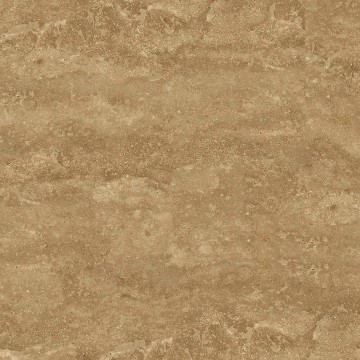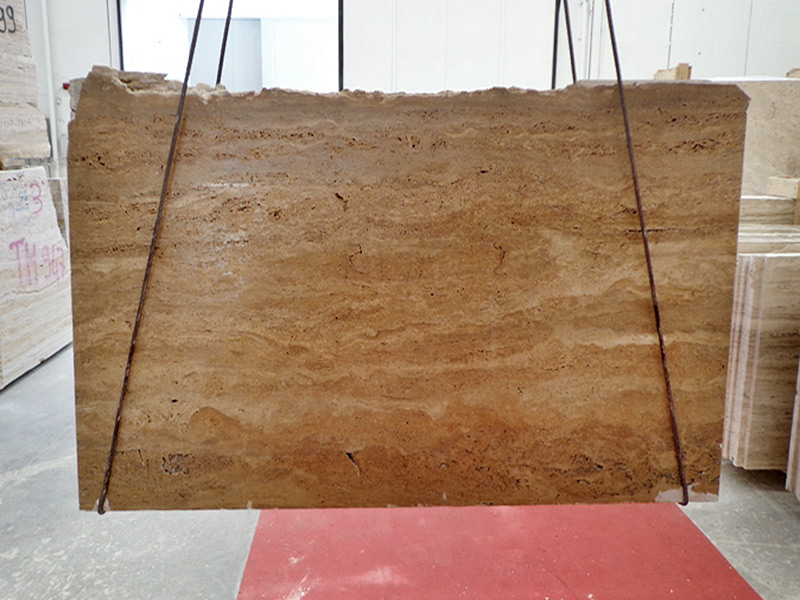Noce Travertine (Brown Travertine)

Noce Travertine is a brown travertine which comes from the Rapolano basin1 in the heart of the Crete Senesi, Tuscany. This travertine is not to be confused with the low-quality travertine from Turkey with the same name. All the Noce Travertine products on this site are premium grade and quarried in Tuscany, Italy.
The quarries in which this stone is extracted from are centuries old. The properties of Noce Travertine make it an ideal material for architects and designers as it possesses a great combination of malleability and durability. When Noce Travertine is first quarried, it is softer and can be shaped. But once exposed to the elements this stone hardens and becomes more durable.
It is common to see Travertine deposited in areas where ancient volcanoes have erupted. Noce Travertine is no different. Tuscany holds the record for some of the oldest activity in the Italian Peninsula2.
And this is how this beautiful brown Tuscan Travertine was formed. The famous hot springs3 in the region where formed through volcanic activity. As these springs flooded the surrounding countryside large travertine deposits were created. Like all travertines you can see in the surface small holes. These holes are caused by gas bubbles in the travertine deposits and plant material which has since decayed. All of the travertine on this site is filled with a clear epoxy resin.
There are two reasons for this. The first one is by filling the holes the process of polishing the surface of the slab is easier. And second it is to make maintenance easier. For example, travertine tiles which are no filled will quickly accumulate dirt and small pieces of debris. This would make cleaning a very tedious process. If over time a piece of the epoxy resin filling were to fall out, it is advised to fill it as soon as possible.
An important factor in how your finished travertine will look is the way in which the block which is quarried is cut into slab or tile form. The cutting method which can be used on a Noce Travertine block are 'Vein-Cut' and 'Cross-Cut'.
The term 'Cross-Cut' means to cut the block of travertine horizontally across the top of the block. With this method of cutting you are across the bedding of the stone. The result is circular like patterns.
Whereas with 'Vein-Cut' you are cutting vertically along the line of the bedding or veining (travertine does not really have veining but the bedding is often referred to as veining). This technique creates the swirling types patterns through the stone. How dramatic these swirling type patterns are depends upon the travertine block and the type of travertine. The causes of these swirls is from running ground water leaving oxidation marks on the stone.
Most luxury furniture on this site especially our travertine dining tables (click here to view the collection) will be constructed using vein-cut travertine. Whereas our Noce travertine tiles can be either 'cross-cut' or 'vein-cut'.
Below you can see a Noce Travertine slab which as been 'vein-cut'. If you look closely you can see the bedding flow from left to right. These lighter swirl like markings are from the groundwater passing through the travertine deposit. You can also notice the pitted holes typical of travertine. As mentioned above all of our travertine will come filled with clear epoxy resin.

Noce Travertine is a beautiful and versatile material. Not only can it integrate with a range of design schemes. It also has physical properties which make it suitable for a range of tasks. You can see this stone deployed in a range of application both internally and externally. From fountains and external cladding to luxury furniture and bespoke vanity units or worktops (shown below).
The brown hues of Noce travertine whether ‘Vein-Cut’ or ‘Cross-Cut’ adds warmth and smooth flow to any area in which it is used. The appeal of this beautiful travertine from the mountains of Tuscany is truly eternal.
Products in this Material